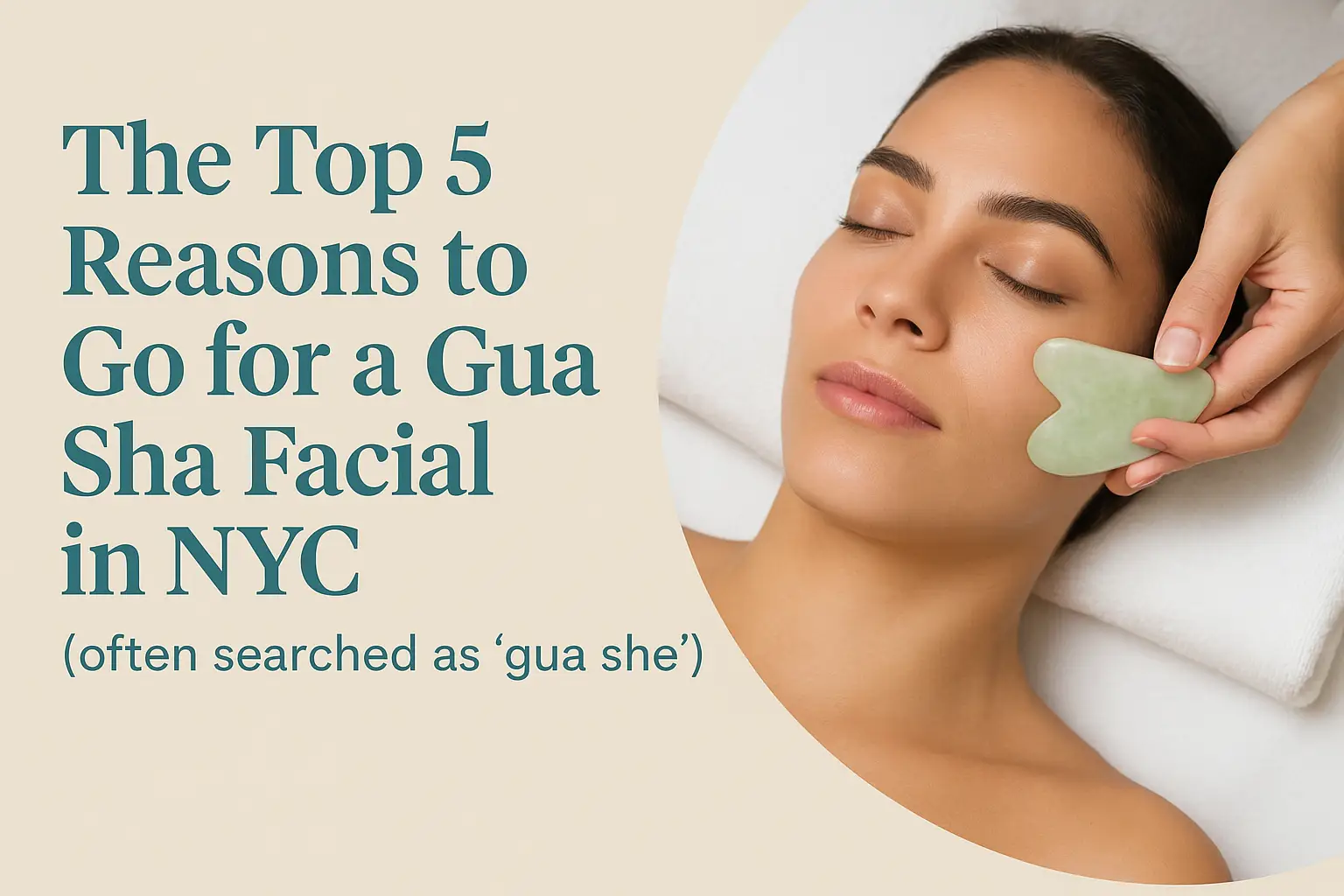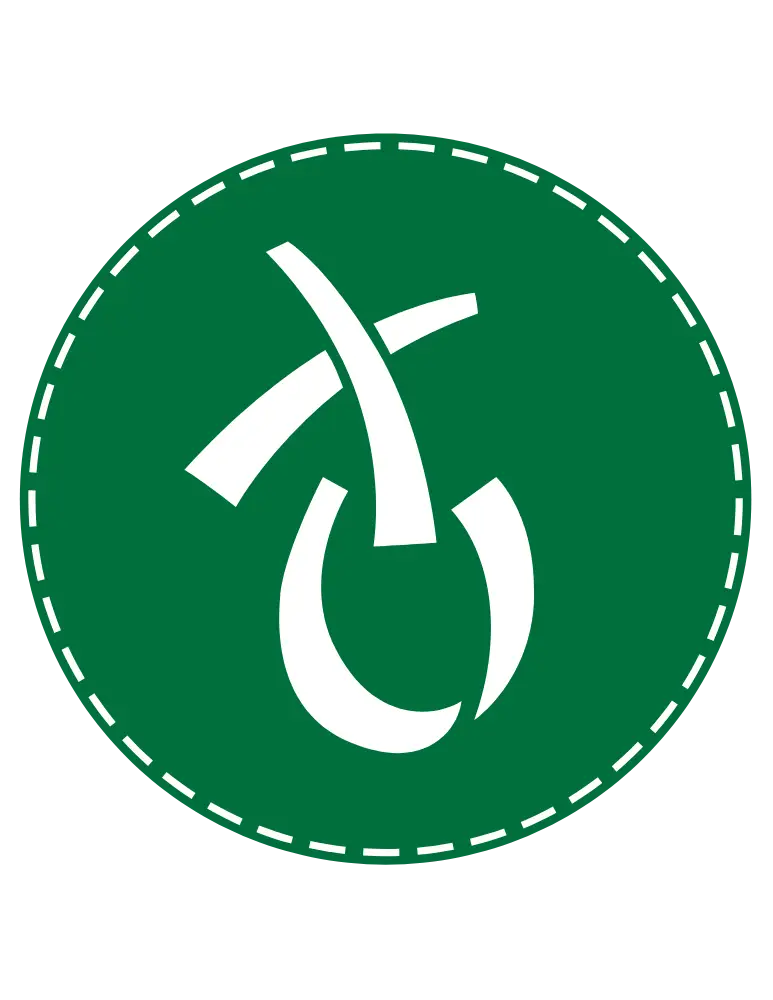The Top 5 Reasons to Go for a Gua Sha Facial in NYC
(often searched as “gua she”)
Your face is the most honest calendar you own. It logs the 6 a.m. commute in your eyes, the held breath in your jaw, the late-night salt along your cheekbones. Some days it feels like your skin is carrying a backpack your mind forgot to take off. You don’t want a harsh reset or another gadget; you want care that listens to the way you actually hold stress and fluid, then gives that weight somewhere kind to go.
My stance is simple: a gua sha facial works best when it is thoughtful bodywork first and beauty second. Technique matters more than the stone. Slow, mapped strokes along lymph pathways, light-to-medium pressure you can relax under, and scrupulously clean tools can produce believable changes—de-puffing, jaw and neck ease, a quieted nervous system—while respecting your skin barrier. Major health systems describe gua sha as a gentle, tool-assisted massage that promotes circulation and reduces tension when performed correctly, and the World Health Organization encourages safe integration of traditional practices in modern care when hygiene and training are in place. Here are five good reasons to choose it.l[m

1) De-puffing that respects how your face actually drains
Most morning “fullness” is fluid, not fat. Gua sha follows the way lymph moves—outward from the center of the face, then down the sides of the neck—so swelling has a real exit route. When pressure stays comfortable and stroke direction is intentional, under-eyes look calmer, the jawline reappears, and skin takes product more evenly. Clinicians at large hospital systems explain gua sha in exactly these terms: a gentle, circulation-promoting massage, not a scrape-and-hope approach. Dermatology writers also point out that while social media often overpromises, lymphatic and vascular effects are a reasonable expectation when hygiene and technique are sound.
2) Relief for jaw, temple, and “tech-neck” tension
If you clench at night, talk for work, or live in spreadsheets, your face isn’t just puffy—it’s braced. Thoughtful gua sha invites blood flow into the masseter, temples, scalenes, and the base of the skull, which helps the nervous system loosen its grip. People often notice easier head turns, fewer tension headaches, and a softer bite after sessions that start on the chest and neck before moving to the jaw and cheeks. Medical centers that teach gua sha emphasize a key safety rule here: it should not hurt. Discomfort is a cue to back off, not “push through.”
A quick tension-tamer to try at home (no stone required):
Clean hands, a drop of slip (serum or lotion).
Three feather-light strokes from the center of the chin along the jaw to just behind the ear, then gently down the side of the neck.
Breathe out while you glide. If you catch yourself holding your breath, the pressure is too much.
3) A glow you can explain, not just “marketing”
That post-treatment radiance has a physiology. In a small hospital pilot study, researchers used laser Doppler imaging and saw a short-term, significant rise in local microcirculation after gua sha, which matches the warm, more even tone people report right away. Dermatology letters have also discussed how hands-on techniques like gua sha or jade rolling can transiently improve blood and lymph flow, with a reminder to keep expectations realistic and to prioritize clean, intact tools. The takeaway: done well, gua sha can make skin look more awake because you’ve literally moved more blood to the surface and reduced pooled fluid—not because of a trick of light.
4) Your nervous system gets a say—and often, a sigh
The rhythm of gua sha (glide, pause, breathe) cues the body out of “go mode.” Pain researchers have long shown that sensory input and expectation can change how we perceive discomfort, and major clinics note gua sha’s usefulness for tension patterns and headache relief when used appropriately. None of this replaces medical care, but it explains why people sleep better the night of a session and why the face looks less “armored” afterward. The WHO’s guidance on integrating traditional practices highlights exactly this kind of supportive benefit: safe, calming techniques that sit alongside conventional care.
5) It’s gentle, adaptable, and honest about safety
Good gua sha meets your skin where it is—acne-prone, sensitive, dry, or combination—and chooses the right slip (oil, gel, or lotion) so the stone glides without dragging. Medically reviewed resources consistently underline a few guardrails: avoid facial gua sha for several weeks after injectables unless your provider clears you; skip active rashes or flares; and talk to your doctor first if you’re pregnant, on blood thinners, have a bleeding disorder, diabetes with reduced sensation, or significant circulatory issues. Dermatology authors also remind practitioners to disinfect tools between clients and retire anything chipped to reduce irritation and infection risk. Thoughtful technique plus hygiene is what makes this “natural” option genuinely low-risk.
A personal note, not a pitch
I practice gua sha quietly: pressure you can breathe under, strokes that give fluid a plan, and pauses where the body naturally drains. Whether you see me or someone else in the city, choose a practitioner who welcomes your feedback, explains what they’re doing, and keeps the focus on gentle, mapped touch rather than force. You deserve a face that doesn’t have to prove how hard you worked today.
